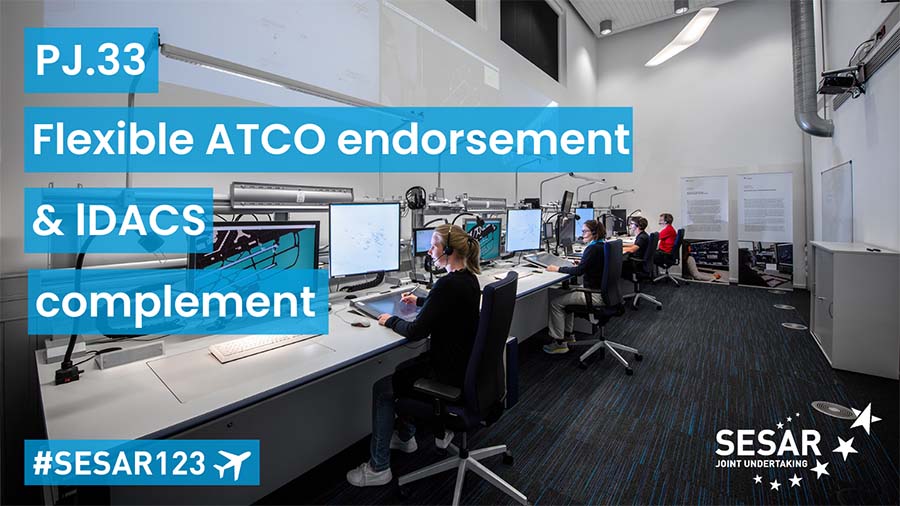The SESAR industrial research project PJ.33-W3-FALCO, “Flexible ATCO Endorsement and LDACS Complements”, investigated solutions for making air traffic management and the deployment of air traffic controllers more flexible, cost-efficient and responsive to changing traffic demand and conditions. The project also trialed LDACS, “L-Band Digital Aeronautical Communication System”, a technology offering spectrum-efficient data link connectivity and digital voice communications between air and ground.
Funded within the framework of Horizon 2020, PJ.33-W3-FALCO worked on two solutions aimed at increasing the efficiency of air traffic management:
- Building on previous research, e.g., PJ.10-W2-PROSA, the project investigates ways of deploying air traffic controllers more flexibly to specific portions of en-route airspace, sectors and working positions, when and where needed, explicitly excluding approach control. For this purpose, the partners develop tools and procedures tailored to reduce the need for local knowledge of air traffic controllers on a sector. This means that air traffic controllers could potentially cover larger portions of airspace or provide service in neighbouring air traffic control sectors in case of outages. In doing so, air traffic control service provision became more resilient and responsive to unexpected events, changes in traffic demand or staff shortages. Not only this helped to make better use of airspace but it will also result in a more efficient use of human resources. The higher deployment flexibility will be achieved by introducing new endorsement rules, which are based on a specific class of working environment and supporting system.
- The efficiency of communication between controllers and pilots is to be improved by the introduction of digital voice that is one of the functions supported by LDACS. In this project, the technical requirements for a broad introduction of the LDACS digital voice capability was investigated. Furthermore, LDACS, which offers a viable and more spectrum-efficient alternative to existing analog radio communications, was tested with flight trials under real-world conditions. By improving connectivity between air and ground, LDACS is considered as a key enabler for the introduction of new air traffic concepts such as dynamic airspace configurations, flight-centric air traffic control, and virtual centers - all critical solutions for creating scalable and sustainable air traffic management.
PJ.33-W3-FALCO had a duration of two years. For an overview over all involved partners please refer to the participants list down below.
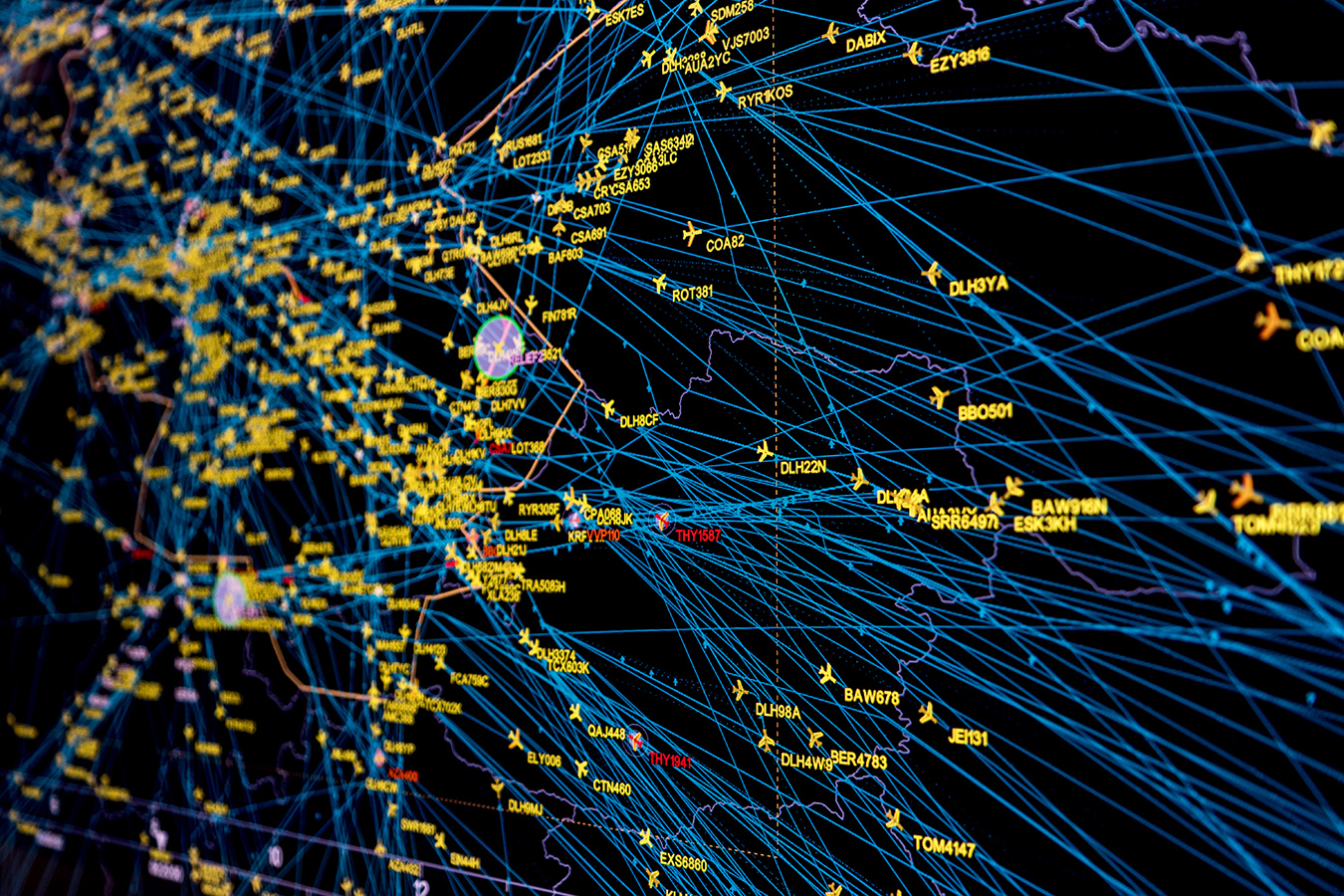
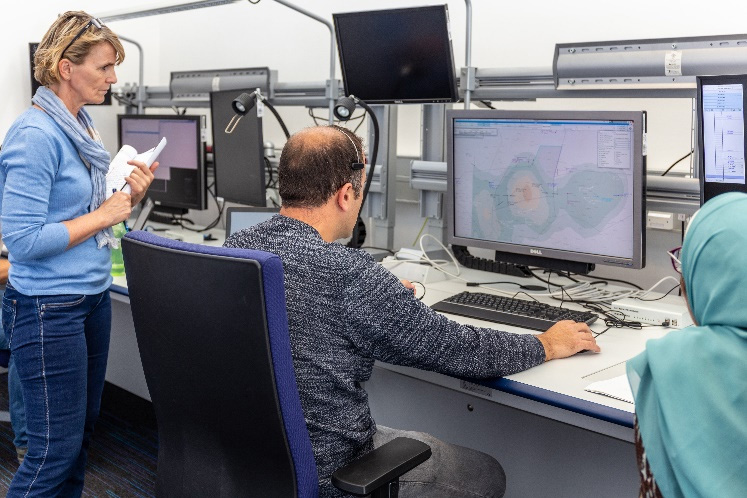

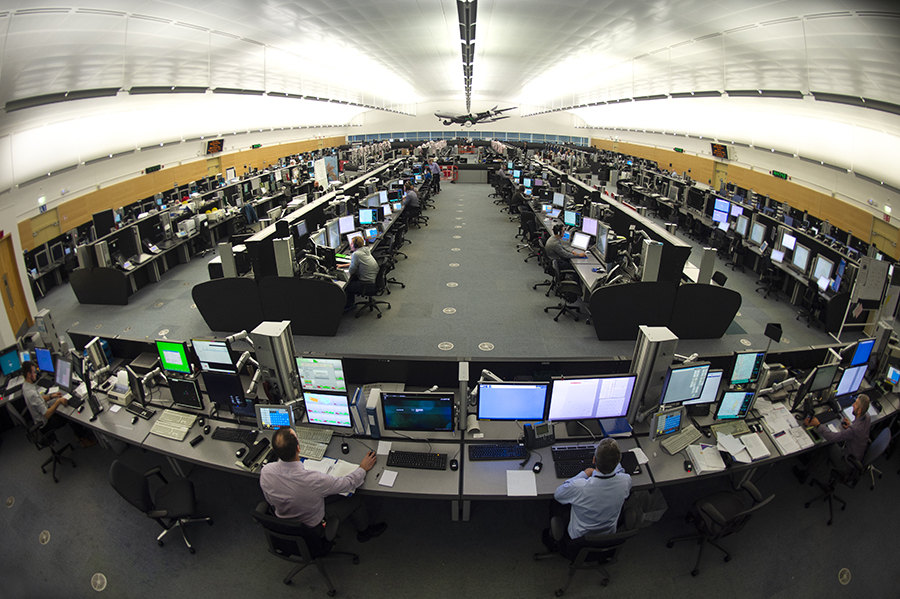
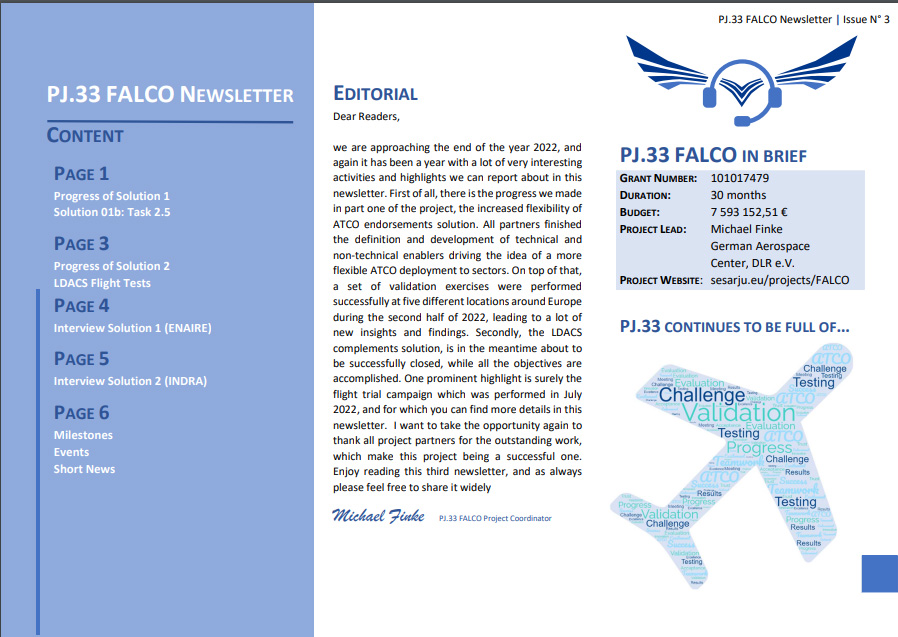 Issue 3 (December 2022)
Issue 3 (December 2022)
 Issue 2 (2022)
Issue 2 (2022)
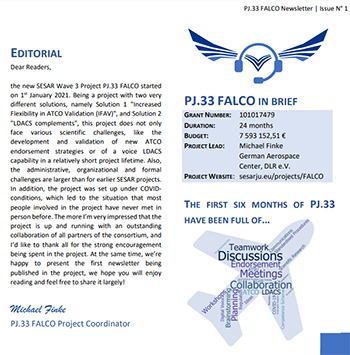 Issue 1 (July 2021)
Issue 1 (July 2021)
